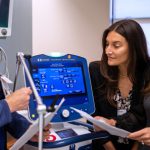As National Nurse Practitioner Week comes to a close, it is important to note the critical role nurse practitioners play in providing quality, access and affordability in primary, acute and specialty care.
Recently implemented health care policy will result in a primary care provider shortage due to an increase in the number of insured patients. The Institute of Medicine cites ballooning demands on the health care system as the population ages and as more people have health insurance under the 2010 Affordable Care Act. The American Association of Medical Colleges has estimated that the United States will be short some 45,000 primary care physicians by 2020. Particularly in rural and underserved areas, there are just not enough physicians to meet the expected demand.
One solution to this problem is to educate people about health care resources that are available to them, particularly the option of utilizing a nurse practitioner as their primary care provider. For almost 50 years, these professionals have been offering their clinical and diagnostic expertise to patients, crafting assessment and treatment plans and helping patients to implement them. The nurse practitioner focuses not just on a specific health issue, but on the health and long-term well-being of the whole person. They guide their patients in making smarter lifestyle choices, order and interpret diagnostic tests, and design effective treatment programs—including prescribing medications.
At this time, there are approximately 171,000 active nurse practitioners providing high-quality care in a variety of settings including clinics, hospitals, emergency rooms, urgent care sites, private practices and public health departments. They have earned advanced degrees (the master’s and/or doctoral degree) and have clinical training beyond that required for initial registered nurse preparation. Studies have shown that patients who use a nurse practitioner as their primary provider have fewer emergency room visits, shorter hospital stays, and an extremely high level of satisfaction with their care.
The American Association of Nurse Practitioners estimates that 14,000 new nurse practitioners enter the health care market annually. At the University of Pittsburgh School of Nursing, we have preparation programs leading to the nurse practitioner—including the Doctor of Nursing Practice, or DNP—one of several prestigious educational programs throughout the United States. We hope that these well-trained professionals will close the gap between number of insured and the number of providers.
Jacqueline Dunbar-Jacob, Ph.D., R.N., F.A.A.N. is the Dean and Distinguished Service Professor at the University of Pittsburgh School of Nursing.









